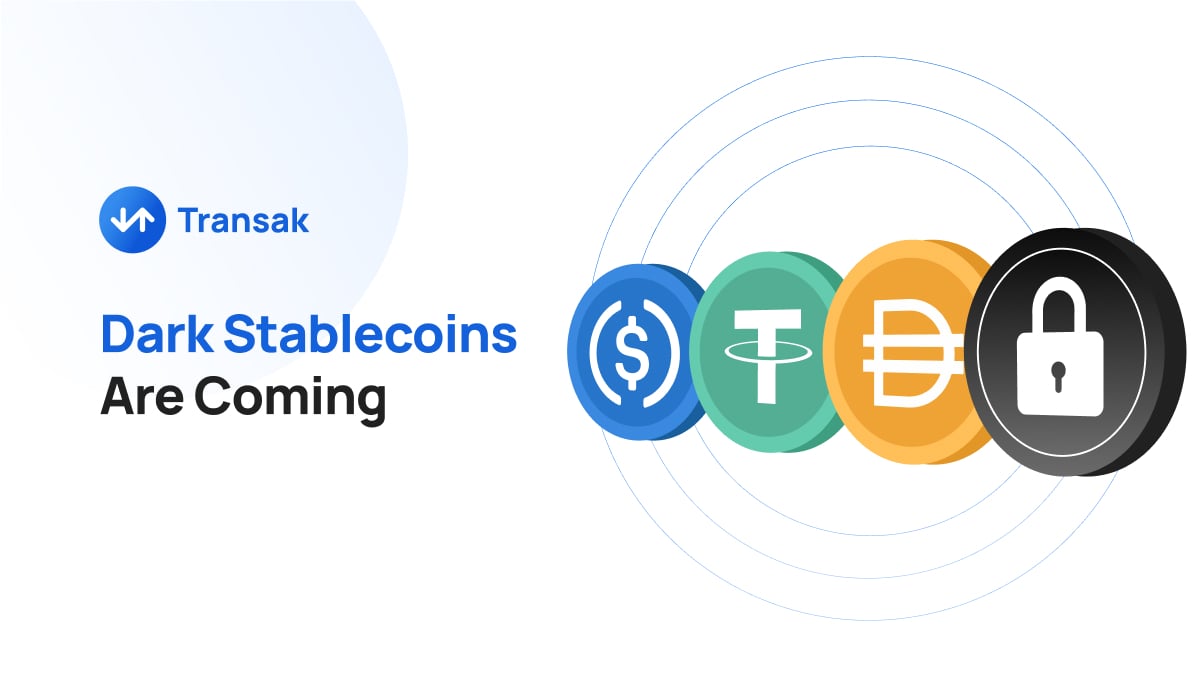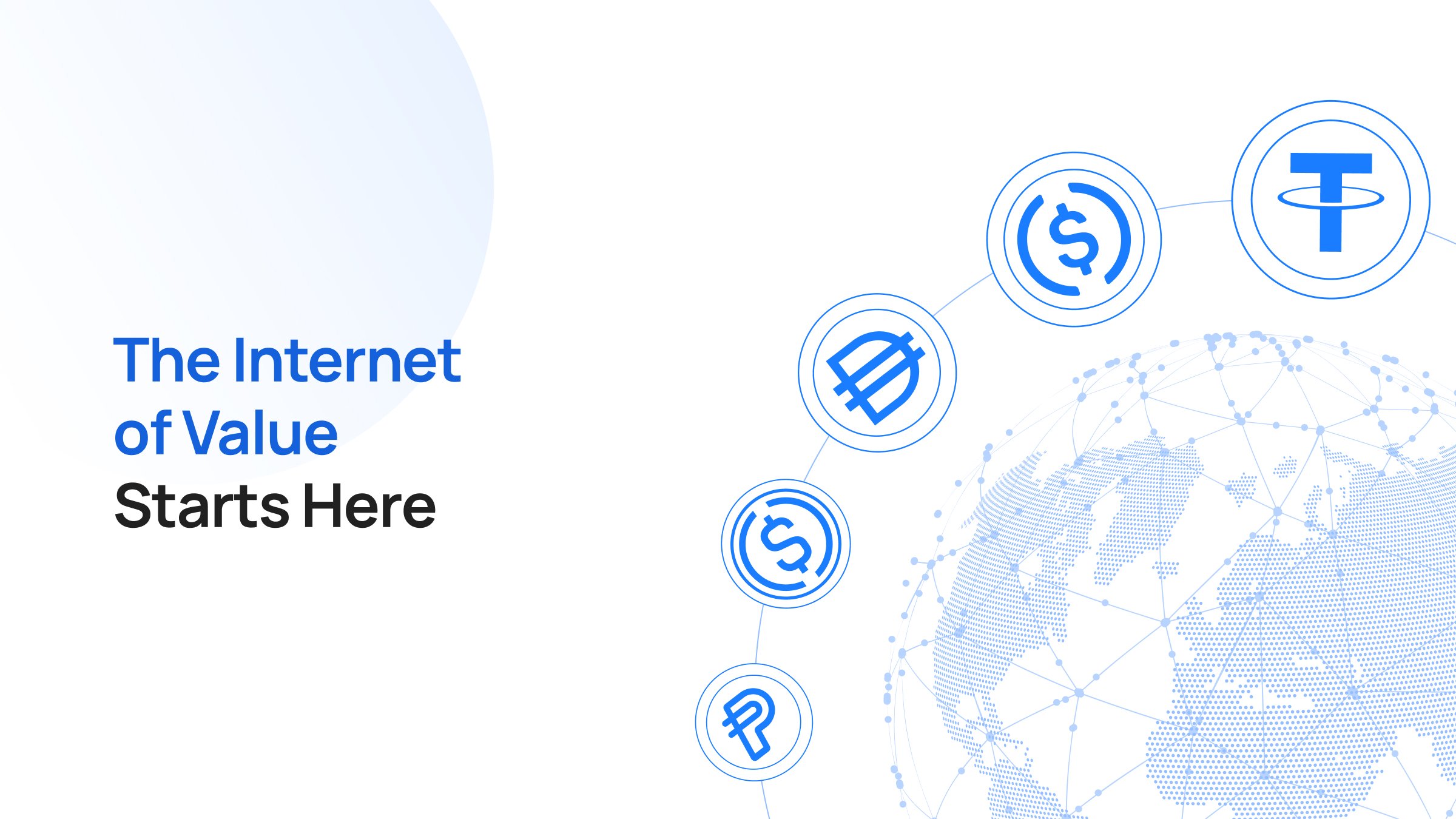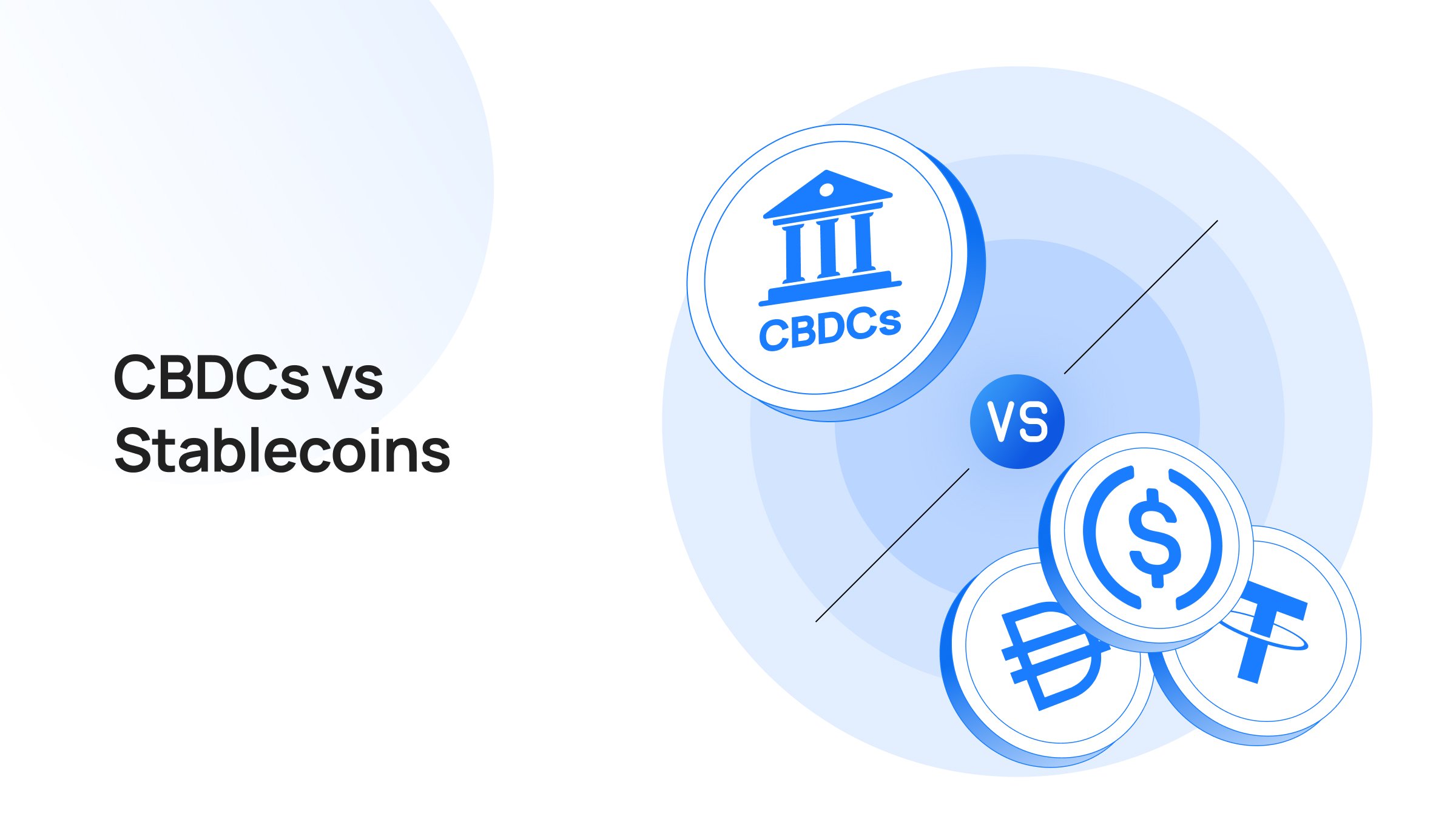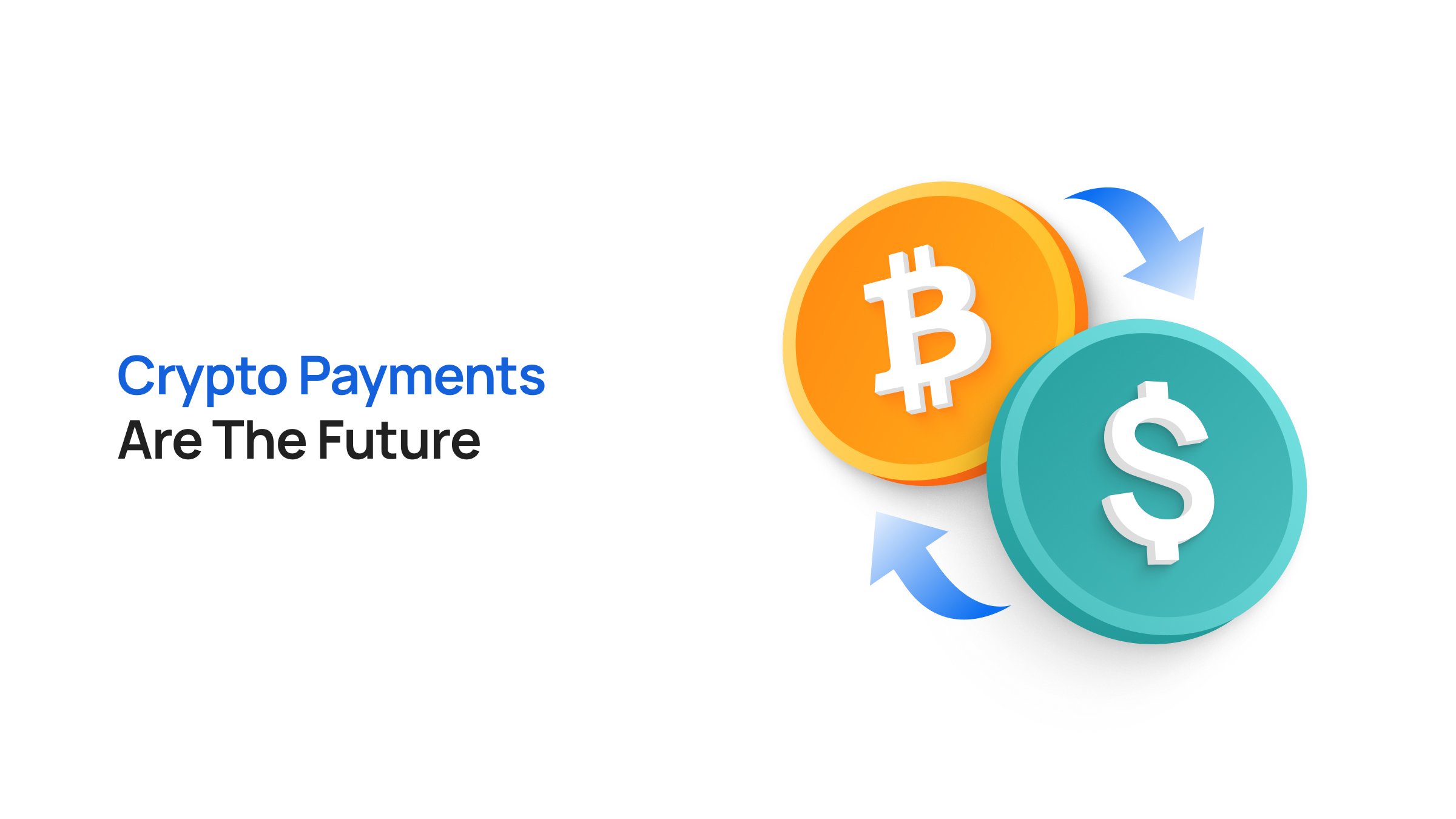Takeaways
Privacy-focused stablecoins, dubbed “dark stablecoins” are rising.
When Citibank predicted that the total value of stablecoins would soon overtake the total crypto market cap, it was signaling what was happening on the ground.
Today, stablecoin volumes are 2/3rd of total crypto volume, surpassing the combined volumes of Mastercard and Visa. Even Stripe provides stablecoin payments as a cheaper alternative to cards in 101 countries.
Despite financing trillions of dollars worth of transactions on-chain, stablecoins are increasingly facing regulatory scrutiny and might end up with the same fate as fiat – restricted, centralized, and censored, according to a recent tweet from Ki Young Ju, CEO of Cryptoquant.
Young talked about a new breed of stablecoins bound to rise in response to the restrictions – dark stablecoins. The tweet bearing the idea of dark stablecoins triggered a wave of mixed reactions on Crypto Twitter.
The Controversy: The Inevitability Of Dark Stablecoins?
Stablecoins are borderless money, reshaping the internet economy. They power e-commerce businesses, serve as a hedge against inflationary local currencies, and provide liquidity to DeFi.
As of May 22, 2025, the stablecoin market cap had reached $232 billion.
Tether (USDT) and Circle (USDC) control the majority of stablecoin transactions. Their growing share among retail transactions (transactions lower than $1 million) and use in money laundering activities has also brought them under strict regulatory scrutiny.
MiCA regulations require stablecoin issuers active in the EU to obtain MiCA licenses, publish detailed whitepapers, and adhere to strict reserve asset management, governance rules, and redemption rights. The US GENIUS Stablecoin Act proposes full US Dollar reserve backing, transaction monitoring, and customer identification, among other requirements.
Also, stablecoin issuers must show ‘the ability to freeze or burn tokens’ (Tether and Circle, being centralized, can already do that!). Under the law, non-compliant ones would be barred from the US.
That’s state censorship, control, and surveillance at its peak.
Understandably, Young’s concerns around ‘conventionalized stablecoins’ are valid. Young says, “Soon, any stablecoin issued by a country could face strict govt regulation, similar to traditional banks. Transfers might automatically trigger tax collection through smart contracts, and wallets could be frozen or require paperwork based on government rules.”
This defeats the purpose of cryptocurrency, birthed from the cypherpunk movement, and which began with Bitcoin as a peer-to-peer payment network free from third-party interference or government control in 2009.
As more governments tighten KYC norms, wallet-level enforcements, and tax provisions, the crypto market will find a way around them. X user, @_The_Prophet__, says, “The demand for censorship-resistant dollar equivalents will explode. This is not optional. It is a reflexive inevitability once capital flow restrictions tighten. History shows this every time.”
The rise of dark stablecoins seems inevitable in the coming years.
What Are Dark Stablecoins?
Dark stablecoins refer to privacy-preserving stablecoins that combine the price stability of traditional stablecoins (like USDC or USDT) with privacy features like Monero or Zcash.
These stablecoins aim to hide transaction details such as sender, receiver, amount, and wallet balances while still maintaining a stable value, usually pegged to fiat currencies like USD.
You can think of dark stablecoins as ‘stablecoins in stealth mode’. They are privacy-focused and independent of government control. They may be pegged to the dollar or other fiat currency or cryptocurrency or governed by algorithms.
Privacy coins already exist, but they lack the stability that comes with stablecoins. Dark stablecoins would live in the middle ground (between privacy and stability).
Stablecoins like USDT (Tether) and USDC (Circle) are enormously centralized. Both use custodial models, i.e., Tether and Circle, that need to hold cash reserves in banks to keep the dollar peg stable. Therefore, these stablecoins need to comply with government regulations.
Unlike USDT and USDC, these stablecoins would be fully decentralized.
While still a vision, a typical dark stablecoin would be:
- Solely code-driven
- Fully decentralized
- Censorship resistant
- Immune from surveillance and tax regulations
- Maintain Monero (XMR)-like privacy
- Become a high-risk, high-reward crypto asset
The rise of a new era of dark stablecoins is imminent if tighter restrictions and regulations keep choking the sector’s growth.
Nephrite, a stablecoin on the Beam Network, could be a good example of a censorship-resistant or dark stablecoin. xUSD by Haven, Silk on the Secret network, and ZeroStableCoin are some other examples of existing private stablecoins. Each of these stablecoins has its design compromises and isn’t very popular.
DAI by Maker and LUSD by Liquity are two popular non-custodial, decentralized stablecoins that could be called precursors to the dark era.
Types of Dark Stablecoins
While Young discusses two broad categories of dark stablecoins that could exist in the future, we found three categories that might become the norm:
- Algorithmic dark stablecoins
- State-sponsored dark stablecoins
- Crypto-pegged dark stablecoins
1. Algorithmic Dark Stablecoins
Algorithmic stablecoins are coins pegged to fiat but not backed by real assets. Instead, algorithms control and maintain the coin's peg. These stablecoins have always been controversial given their 100% failure rate (espcially after the Terra-UST collapse).
Still, concepts are emerging that signal hope for algorithmic stablecoins.
Young says the coin can be pegged to the price of regulated coins like USDC via oracles like Chainlink. Terra-UST failed because it competed in regulated liquidity pools.
If, in the future, the demand is for privacy-focused and censorship-resistant capital, algorithmic stablecoins can easily exist in a ‘parallel financial layer, serving the demand that the regulated system cannot.’
2. State-Sponsored Dark Stablecoins
These stablecoins would be pegged to fiat currencies of nations that don’t censor or restrict crypto/financial transactions. For instance, AE Coin is pegged to UAE’s Dirham in a 1:1 peg.
These stablecoins might be advantageous for rogue nations looking to overcome global sanctions, such as Russia, Iran, or other small countries. They would not follow any Western regulations and might become an alternative for investors seeking to route capital without restrictions.
3. Crypto-pegged Stablecoins
Stablecoins pegged to other cryptocurrencies, especially Bitcoin, might see a new dawn in the coming years. To avoid the volatility associated with cryptocurrencies, these stablecoins must always be overcollateralized.
X user, @_The_Prophet__, says, “These assets won’t live on public, compliant chains. They’ll bridge into Bitcoin L2s, privacy-focused chains, or even TOR-routed DeFi layers. Liquidity will be deep but invisible to traditional markets.”
Another way of issuing crypto-backed stablecoins is to hedge the stablecoin USD peg against Ethereum or Bitcoin Futures. These kinds of stablecoins are called delta-neutral stablecoins. An example is USR by the Resolv Protocol.
Advantages and Disadvantages of Dark Stablecoins
The Good
- Censorship-resistant money: Dark stablecoins would be an attempt to reinstate the censorship-resistant nature of cryptocurrencies. They would belong to no one; hence, no one can impose sanctions or issue surveillance diktats to control them.
- Private and cost-effective: Central banks may insist that they respect our privacy, data, and identity in financial matters. But that’s not true. Stablecoins fill the gaps in the traditional rails by letting people from third-world countries store wealth in a stable asset and transact across borders cost-effectively.
- Decentralized and Non-custodial: With regulations as a tool, big nations might use stablecoins to export debt and maintain their supremacy. Dark stablecoins will act as a resistance, disallowing state-sanctioned stablecoins to become the only medium for retail transactions.
The Bad
- Lack of Privacy Tech: Privacy tech and infrastructure are still complex, and investment is lacking.
- Unproven Algorithmic systems: Terra-UST failure proved that uncollateralized stablecoins based on algorithms are fragile and cannot maintain their pegs under stress.
- Lack of Trust: State-sponsored stablecoins will lack trust from the greater world, as non-censoring countries often lack financial infrastructure, liquidity, and credibility. Stablecoins command trust given their legality and economic acceptance. If that ceases to exist, there would be no support for wide use cases.
- Niche Appeal: Dark stablecoins may appeal to only privacy-maximalists or a niche group of users. The larger user base would still rely on regulated stablecoins for the stability, legal clarity, and accessibility they offer with mainstream financial systems.
The Curious Case Of Tether
Young’s tweet also mentions the possibility of Tether becoming a dark stablecoin if it ever decides to forgo US regulatory compliance.
Fiat-backed stables, including Tether USDT, are mostly under scrutiny for obvious reasons. They are pegged to traditional cryptocurrencies and act as a bridge between the real-world fiat and crypto. Governments worldwide would be interested if trillions of dollars of wealth were flowing out of their systems into crypto, and going into use cases or regions never known. Already, scammers are using USDT to facilitate P2P scams for money laundering.
While Circle’s USDC is fully MiCA-compliant, Tether USDT is yet to follow compliance in the MiCA-governed EU. Consequently, EUR stablecoins now have 67% of the stablecoin market share in the EU. However, 99% of the stablecoin market is still dollar-pegged, out of which Tether has a 66% market share.
An X user posted, “Tether, managed by Cantor Fitzgerald, is overseen by Howard Lutnick…Trump’s Commerce Secretary and transition team co-chair. The notion that Tether would be targeted under an administration where its custodian is a key official is ridiculous.”
Tether not complying with the US or other regulations seems a far-fetched possibility, and so its chance of becoming a dark stable is low. To date, it has adopted a grey stance, but it would have to make a choice between survival and opportunity.
Future Outlook
Young says that dark stablecoin-related assets may soon become a good capital investment in the Internet capital market. However, before dark stablecoins become a true reality, many players are involved—Oracles, privacy bridges, DEXs allowing non-compliant liquidity, etc.
It will also be seen whether the crypto sector, which is increasingly moving towards compliance and adoption, considers embracing the idea of privacy-focused stablecoins.
Dark stablecoins will be a high-risk, high-reward sector that creates a shadow liquidity layer unseen by governments. As regulations tighten, or as X user @_The_Prophet__ says, ‘financial censorship passes the pain threshold,’ dark stablecoins will be a certainty.






